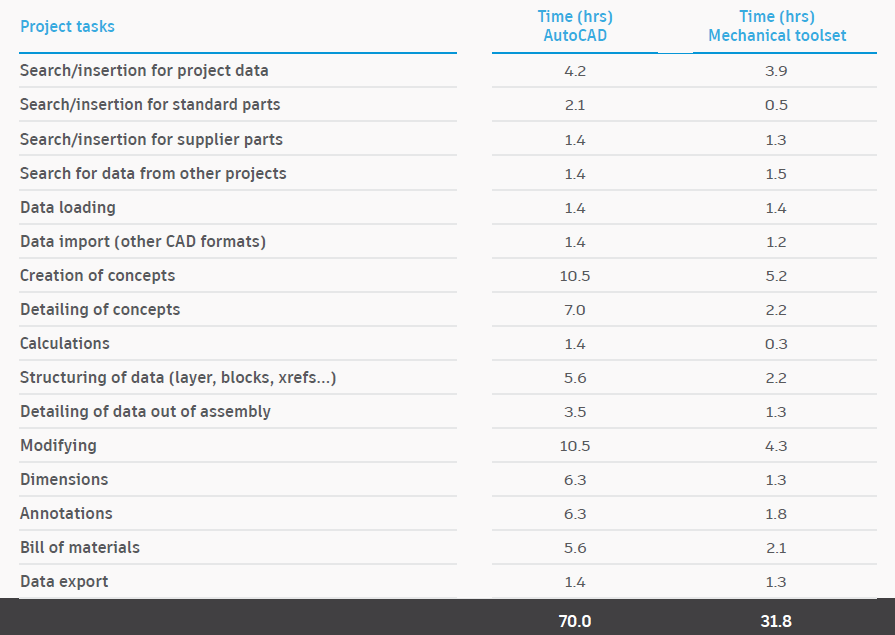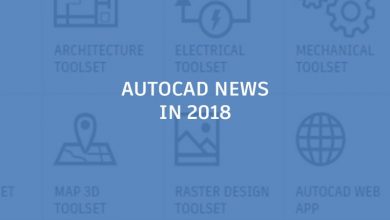
Today, 2D CAD is most often used by mechanical engineers to design machines, plan factory layouts, or rework legacy data. And the Mechanical Toolset available in AutoCAD is ready to help save you time by automating many design tasks.
According to a new productivity study, a total time reduction of approximately 55%* was achieved with the Mechanical toolset. The risk of error is also greatly reduced with more standardized functions and the availability of standardized parts.
In the graph below, you can see typical AutoCAD design tasks in detail with the related times for the specific project in the study. In this case, it was modifying an existing robot handling assembly. This included a team of designers, electrical engineers, programmers, purchasers, and technicians to build the robot and different tasks that were required to modify it.
In this study, the 11 common design challenges analyzed were just a few examples taken from the complete project. Here’s a complete look at the needed CAD working time for the complete project:

Don’t miss Shaun Bryant’s step-by-step webinar to learn more about time-savings and automations with the Mechanical toolset. Topics include:
- Detailing and optimization of designs
- Calculating forces in a mechanism
- Creating views of a mechanical design
- Adding standard screws and holes
- Inserting balloons and parts lists (BOM)
For insights on productivity gains with other toolsets, be sure to check out our entire series.
*Productivity data based on a series of studies commissioned by Autodesk to an outside consultant. The seven toolset studies compared basic AutoCAD to the specialized toolsets within AutoCAD when performing tasks commonly done by experienced AutoCAD users. As with all performance tests, results may vary based on machine, operating system, filters, and even source material. While every effort has been made to make the tests as fair and objective as possible, your results may differ. Product information and specifications are subject to change without notice. Autodesk provides this information “as is”, without warranty of any kind, either express or implied.
Source: Autodesk







